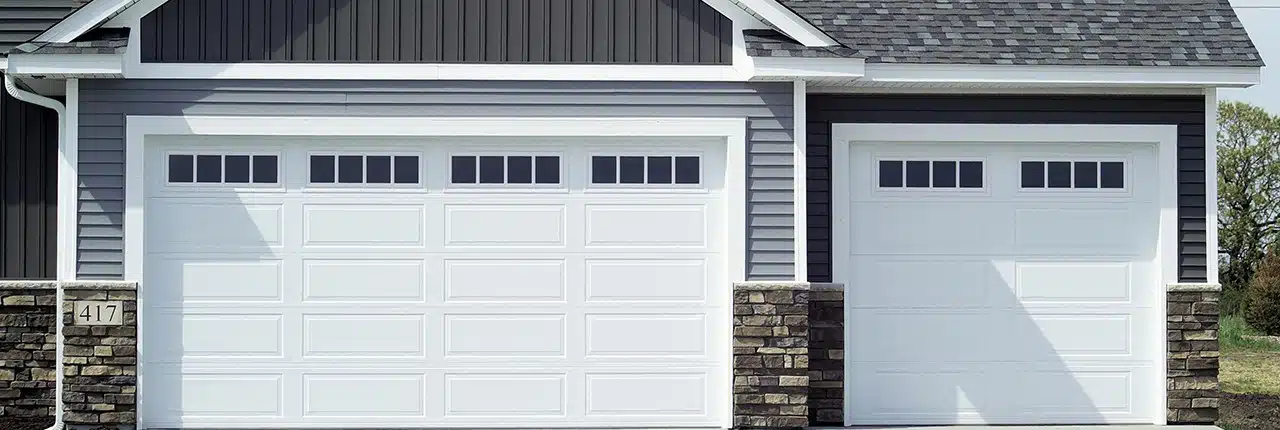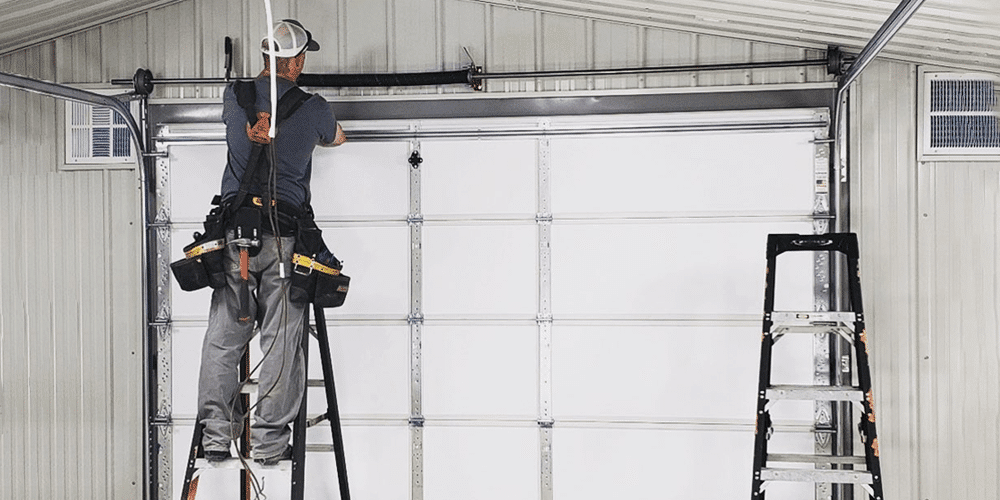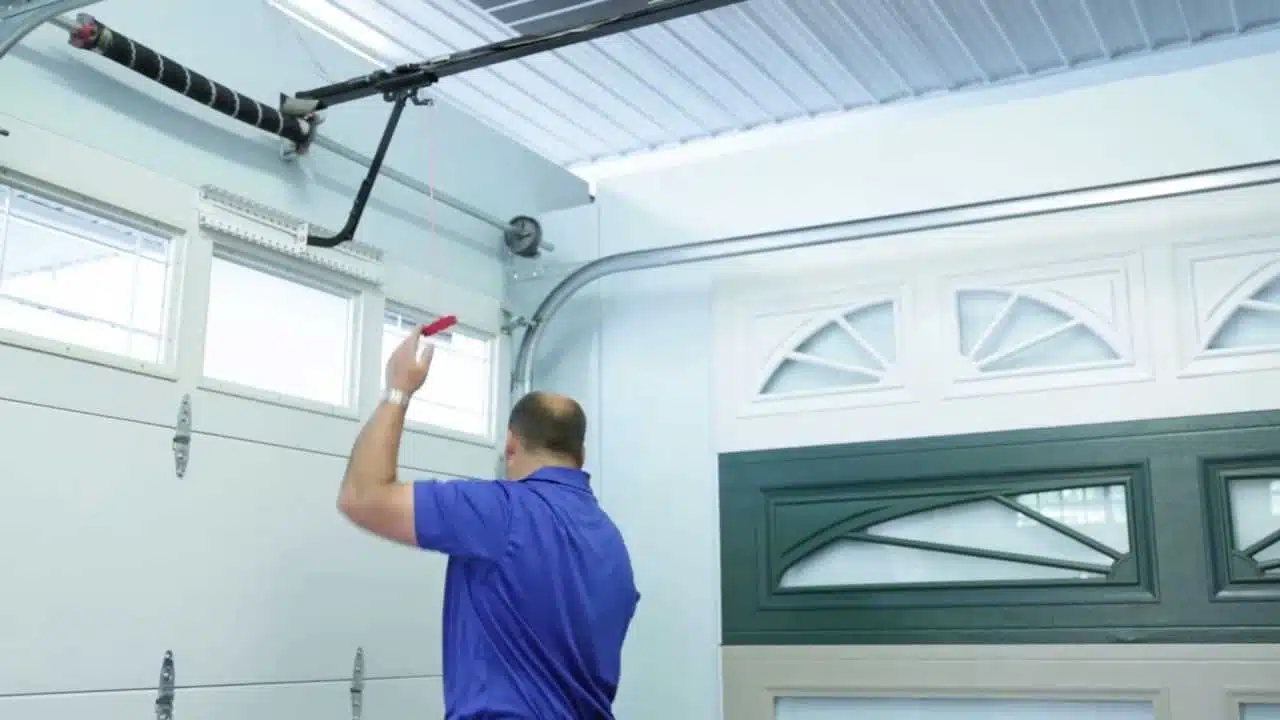Should both garage door sensors be green? Learn what the indicator lights mean, how to troubleshoot misaligned or faulty sensors, and what to do if one or both aren’t green.
If your garage door isn’t closing properly and you’ve noticed one or both sensor lights acting up, you might ask, “Should both garage door sensors be green?” This is a ubiquitous question among homeowners. Sensor lights are essential safety features, and understanding their behavior can help you maintain a secure, fully functioning garage door system.

When working correctly, most garage door sensors display solid lights—typically green on the receiving sensor and amber on the sending unit. If either light is off, blinking, or inconsistent, it may signal misalignment, obstruction, or a wiring issue. Trust the MF Solutions Buffalo Grove professionals to restore proper sensor alignment and door safety for a fast, accurate diagnosis.
Understanding the Basics of Garage Door Sensors
Garage door sensors are designed to prevent the door from closing when something or someone is in its path. They’re a critical safety feature that the law requires on all modern garage door systems.
These sensors work in pairs:
- One sensor sends an invisible infrared beam (transmitter)
- The other sensor receives the beam (receiver)
When this beam is blocked by a child, a pet, or even a leaf, the sensors signal the garage door opener to halt or reverse movement.
What the Sensor Light Colors Usually Indicate
If you’re asking, “Should both garage door sensors be green?” It’s important to understand that different lights serve different functions.
Here’s what you’ll typically see:
- Amber or yellow light = Transmitting sensor (shows it’s powered)
- Green light = Receiving sensor (shows it’s aligned and detecting the beam)
This setup is standard. If both lights are solid (one amber, one green), the system works as it should. But if one light blinks, dims, or goes entirely off, that could mean trouble.
MF Solutions Buffalo Grove often sees homeowners misdiagnose sensor problems because they expect both lights to be green. In most systems, that’s not the case. Let’s explore why.
Should Both Garage Door Sensors Be Green?
This is the core question. Should both garage door sensors be green at the same time? The short answer is no, not usually.
In most garage door systems:
- Only the receiver lights up green to show it’s receiving the infrared beam
- The transmitter typically shows a steady amber or yellow light
If both are green, it might be specific to your model, but that’s uncommon. What’s more important is that both lights are steady and not blinking. Blinking or no light means there’s a problem.
You should also know: if both lights are off, your system might have a power issue or faulty wiring. Don’t ignore these signs. MF Solutions Buffalo Grove recommends investigating sensor lights immediately to avoid safety risks.
Why One or Both Sensor Lights May Be Off or Blinking
For several reasons, you may notice blinking, dim, or missing lights on your garage door sensors. Below are the most common causes:
1. Sensor Misalignment
Even the slightest bump can misalign sensors. When this happens, the beam can’t complete its path, and the door won’t close.
2. Dirt or Debris
Dust, cobwebs, or smudges on the lenses can interrupt the beam. A dirty sensor is one of the easiest issues to fix.
3. Sunlight Interference
Bright sunlight hitting the sensor can mimic or overpower the beam, especially during certain times of day.
4. Power or Wiring Issues
The light may go out completely if one sensor loses power due to a disconnected wire or power surge.
5. Physical Damage
If a sensor has been hit by a car tire, broom, or lawn equipment, it could be damaged internally.
Troubleshooting these problems early helps prevent larger repair bills later. That’s why MF Solutions Buffalo Grove offers fast, same-day diagnostics for local homeowners.
Simple Troubleshooting Steps You Can Try

Before scheduling a service call, you can safely try a few troubleshooting steps. Here’s a step-by-step checklist:
Step 1: Clean the Sensors
Use a soft cloth to wipe each lens gently. Don’t use harsh chemicals.
Step 2: Check Alignment
Sensors should face directly at each other. Use a level or measuring tape to ensure they’re aligned evenly.
Step 3: Inspect for Power
Check to make sure wires aren’t frayed or disconnected. Look for any blinking lights that may signal a loose connection.
Step 4: Test the Door
Try using your garage door opener after realignment and cleaning. If it works, the problem may be solved.
Step 5: Don’t Bypass the Sensors
Never tape over or attempt to bypass your sensors manually. Doing so compromises safety and can damage your system.
If the issue persists, call MF Solutions Buffalo Grove. Their trained team will inspect and repair your system thoroughly.
Why Garage Door Sensor Issues Shouldn’t Be Ignored

Faulty garage door sensors can seem minor, but they pose serious safety risks. If a sensor doesn’t detect motion, your garage door could close on an object, vehicle, or even a person.
Warning signs of a failing sensor system include:
- The door won’t close
- The door reverses unexpectedly
- Blinking green or amber lights
- Clicking sounds without movement
Ignoring these issues may also wear out your opener or damage your garage door.
MF Solutions Buffalo Grove stresses the importance of early intervention. Their licensed technicians can quickly identify and fix issues before they turn into more expensive repairs.
How MF Solutions Buffalo Grove Can Help
When DIY fixes aren’t enough, professional support makes all the difference. Here’s how MF Solutions Buffalo Grove can assist you:
- Fast Diagnostics: Identify exactly why the sensors aren’t working
- Precise Realignment: Ensure the beam connection is clean and uninterrupted
- Repairs & Replacements: Fix broken parts or replace faulty sensors
- Wiring Checks: Find hidden issues in the power source or circuits
- Same-Day Service: Restore function and safety without long wait times
If you’re still wondering, “Should both garage door sensors be green?”—don’t wait for a bigger problem to occur. Trust your local experts to get it sorted quickly.
How to Keep Your Garage Door Sensors Working Long-Term

Prevention goes a long way in avoiding sensor failure. Consider these tips to keep your system in good shape:
- Clean the lenses monthly
- Avoid placing items near the sensors
- Keep pets and kids from bumping the devices
- Watch for blinking lights, even if the door still works
- Schedule a yearly tune-up with MF Solutions Buffalo Grove
Staying proactive keeps your garage door running smoothly and helps avoid emergency service calls.
Frequently Asked Questions
Should both garage door sensors be the same color?
No, garage door sensors do not always have to be the same color. Most systems use a green LED for the receiving sensor and an amber or yellow LED for the sending sensor. The different colors help indicate proper function. What’s important is that both sensors are powered and aligned correctly.
What does it mean when one garage door sensor is green and the other is yellow?
A green light typically means the receiving sensor is working and aligned correctly. A yellow or amber light indicates the sending sensor is functioning and transmitting the signal. This combination is normal for many garage door systems and suggests the safety sensors are operating as expected.
Are both sensors supposed to be green?
Not necessarily. In most garage door systems, only one sensor—the receiving unit—shows a solid green light when aligned. The sending sensor often has a yellow or amber light. If both are green in your model, it may indicate proper alignment, but always refer to your manufacturer’s manual for specific color codes.
What color are garage door sensors supposed to be?
Garage door sensors usually feature a green light on the receiving sensor and a yellow or amber light on the sending sensor. These colors help users confirm that both sensors are powered and communicating. If either light is off or blinking, it could indicate a problem with alignment or power.
Should garage sensors be green?
Garage sensors should show a green light if functioning correctly, at least on the receiving side. This green light confirms that the sensor is aligned and receiving the beam. The sending sensor may be yellow or amber, depending on the model. Always check the lights to ensure your door operates safely.
Final Thoughts: What You Need to Know
So, should both garage door sensors be green? Not necessarily. Most systems have one green sensor and one amber sensor. What truly matters is that both lights are solid and stable, not flickering or off. If you’re seeing unusual behavior or your door won’t close properly, it’s best to have the sensors professionally checked.
MF Solutions Buffalo Grove is your trusted expert regarding garage door safety. Faulty sensors can compromise your entire system, so don’t leave things to chance. From diagnostics to realignment, their experienced technicians provide fast, dependable service. If you’ve wondered, “Should both garage door sensors be green?” you know who to call.
End note
MF Solutions Buffalo Grove is your trusted partner for prompt, professional garage door service. Whether you’re dealing with sensor problems or planning preventive maintenance, their expert team is ready to help. Visit mfsolutionsgaragedoors.com or learn more about their story on the About Us page to see why local homeowners rely on them.
Explore recent projects in the Gallery, browse helpful tips on the Blog, or schedule a service directly through their Contact page. For garage door repairs in Buffalo Grove, check out their dedicated Service Page or connect with them on Facebook for updates and support.
MF Solutions
302 Cherrywood Rd, Buffalo Grove, IL 60089, United States
+16304737300






